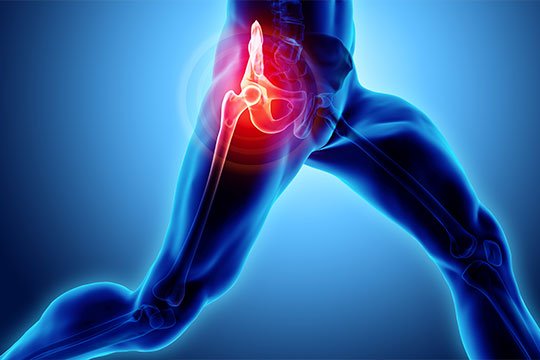Hip pain can be debilitating and significantly impact one’s quality of life. Whether it stems from arthritis, injury, or other underlying conditions, finding effective ways to manage hip pain is essential. In this comprehensive guide, we will explore various strategies for hip pain management, from non-surgical treatments to surgical interventions and lifestyle adjustments.
Contents
- 1 What is Hip Pain?
- 2 Common Causes of Hip Pain
- 3 Risk Factors for Hip Pain
- 4 Diagnosing Hip Pain
- 5 Non-Surgical Treatment Options
- 6 Surgical Interventions
- 7 Alternative and Complementary Therapies
- 8 Preventing Hip Pain
- 9 Living with Chronic Hip Pain
- 10 Hip Pain in Athletes
- 11 When to Seek Emergency Medical Attention
- 12 Home Remedies for Temporary Relief
- 13 Hip Pain Management in the Elderly
- 14 Conclusion
What is Hip Pain?

Dealing with hip pain can be frustrating and challenging, as it hinders daily activities and restricts mobility. Understanding the root causes of hip pain is crucial to find the most appropriate treatment options and relief. In this article, we will delve into the various aspects of hip pain management, empowering you with the knowledge to make informed decisions about your health.
Common Causes of Hip Pain
Hip pain can arise from a variety of sources, each requiring distinct approaches to management. Arthritis, a common cause of hip pain, presents in different forms such as osteoarthritis, rheumatoid arthritis, and post-traumatic arthritis. Additionally, conditions like bursitis, muscle strains, and sciatica can also contribute to hip discomfort. We will explore these causes in detail and their respective implications for management.
Arthritis and its different types
Arthritis is a degenerative joint condition affecting millions worldwide. Understanding its different types and their impact on hip health is essential for developing a personalized management plan.
Bursitis: Inflammation of the hip bursa
Bursitis, characterized by inflammation of the hip bursa, can lead to sharp pain and discomfort in the hip area. Identifying bursitis and differentiating it from other conditions is vital for targeted treatment.
Muscle strains and sprains
Overexertion and improper movement can cause muscle strains and sprains, leading to hip pain. We will discuss methods for promoting healing and preventing further strain.
Hip fractures and their implications
Hip fractures can be severe, particularly in older adults, and may require immediate medical attention and surgical intervention.
Sciatica and its relation to hip pain
Sciatica, a nerve-related condition, can manifest as hip pain. Understanding its connection to hip health will aid in devising effective pain management strategies.
Risk Factors for Hip Pain

Certain risk factors contribute to the development of hip pain. Age-related factors, lifestyle choices, and obesity are among the most significant influencers. We will examine how these factors impact hip health and what steps can be taken to reduce the risk of developing hip pain.
Age-related factors
As we age, our joints and bones undergo changes that increase the likelihood of hip pain. Understanding age-related factors is crucial in preparing for potential challenges and managing hip pain effectively.
Lifestyle and activity levels
Lifestyle choices, such as physical activity and exercise routines, can either alleviate or exacerbate hip pain. Tailoring lifestyle habits to support hip health is vital for long-term well-being.
Obesity and its impact on hip health
Obesity places extra stress on the hip joints, increasing the risk of pain and degenerative conditions. Exploring the connection between obesity and hip pain will underscore the importance of maintaining a healthy weight.
Diagnosing Hip Pain
Properly diagnosing the source of hip pain is critical for implementing the most effective management plan. Medical consultation, physical examination, and imaging tests play a significant role in identifying the underlying cause of hip pain.
Importance of medical consultation
Seeking professional medical advice is the first step in addressing hip pain. Proper diagnosis requires a thorough evaluation by a healthcare provider.
Physical examination and medical history
A physical examination, coupled with a comprehensive medical history, provides essential information to pinpoint the cause of hip pain.
Imaging tests: X-rays, MRI, CT scans
Imaging tests, such as X-rays, MRI, and CT scans, offer valuable insights into the condition of the hip joint and surrounding tissues.
Diagnostic injections to identify the source of pain
In some cases, diagnostic injections may be used to confirm the source of hip pain when other methods are inconclusive.
Non-Surgical Treatment Options
Non-surgical treatment options are often the first line of defense against hip pain. These methods aim to alleviate pain, reduce inflammation, and improve mobility.
Rest, ice, compression, and elevation (RICE)
RICE therapy is a simple yet effective method for managing acute hip pain caused by injury or inflammation.
Pain-relieving medications and their effectiveness
Over-the-counter and prescription medications can offer temporary relief from hip pain, but it’s essential to understand their potential side effects.
Physical therapy and its role in hip pain management
Physical therapy plays a crucial role in hip pain management by promoting strength, flexibility, and proper body mechanics.
Exercises to strengthen the hip muscles
Specific exercises targeted at strengthening the hip muscles can provide support and reduce pain.
Surgical Interventions

When non-surgical treatments fail to provide adequate relief, surgical interventions may be necessary. Hip replacement, arthroscopy, and osteotomy are among the surgical options available.
When surgery becomes necessary
Determining when surgery is the best course of action and understanding the potential benefits and risks is crucial.
Types of hip surgeries: Hip replacement, arthroscopy, osteotomy
Each type of hip surgery addresses different conditions and offers unique advantages.
Rehabilitation after hip surgery
Rehabilitation plays a pivotal role in the success of hip surgery and the recovery process.
Alternative and Complementary Therapies
In addition to conventional treatments, alternative and complementary therapies may provide additional relief for some individuals.
Acupuncture and its Benefits
Acupuncture, a traditional Chinese medicine practice, has gained popularity for its potential benefits in managing pain.
Chiropractic care for hip pain relief
Chiropractic care focuses on aligning the body to promote overall wellness and reduce pain.
Herbal remedies and supplements
Certain herbs and supplements may offer natural relief for hip pain, but it’s essential to approach their use with caution and professional guidance.
Preventing Hip Pain
Taking proactive measures to prevent hip pain is crucial for maintaining long-term joint health and well-being.
Maintaining a healthy weight and diet
A balanced diet and healthy weight contribute significantly to hip health.
Regular exercise and stretching routines
Engaging in regular exercise and stretching routines helps keep the hip joints flexible and strong.
Proper posture and body mechanics
Maintaining proper posture and body mechanics can reduce strain on the hips and prevent pain.
Living with Chronic Hip Pain
Living with chronic hip pain can be emotionally and mentally challenging. Developing coping strategies and seeking support are vital for maintaining a fulfilling life despite the pain.
9.1 Coping strategies for daily life
Learning coping techniques and finding ways to adapt to daily activities can improve the quality of life.
9.2 Emotional impact and mental health support
Chronic hip pain can take a toll on mental health, making it essential to address emotional well-being.
Hip Pain in Athletes
Athletes are particularly susceptible to hip pain due to the demands of their sports. Implementing preventive measures and targeted treatments can support athletic performance.
Overuse injuries and prevention
Overuse injuries are common in athletes and require careful management to avoid hip pain.
Sports-specific considerations
Each sport comes with unique challenges and potential risks for hip health.
When to Seek Emergency Medical Attention
Certain signs and symptoms warrant immediate medical attention to prevent further complications.
Signs of severe hip injuries or conditions
Recognizing red flags and seeking emergency care can make a significant difference in the outcome.
Home Remedies for Temporary Relief
Home remedies can provide temporary relief and complement other treatment strategies.
Heat and cold therapy
Alternating heat and cold therapy can help reduce inflammation and alleviate pain.
Topical creams and ointments
Over-the-counter topical treatments may offer localized relief.
Assistive devices for mobility
Using assistive devices can support mobility and reduce strain on the hips.
Hip Pain Management in the Elderly
Hip pain management in the elderly requires special considerations due to age-related factors and potential complications.
Special considerations for seniors
When managing hip pain in seniors, there are some special considerations to keep in mind due to their age-related changes and potential health conditions. Here are some important considerations:
- Comprehensive Medical Assessment: Seniors may have multiple health conditions, medications, and age-related changes that can complicate the management of hip pain. A thorough medical assessment by a healthcare professional is essential to identify and address any underlying medical issues that may contribute to the pain.
- Medication Management: Older adults may be taking multiple medications, and some pain relievers can interact with other drugs or exacerbate existing medical conditions. Healthcare providers should carefully review a senior’s medication list to avoid potential adverse effects or drug interactions.
- Falls Prevention: Seniors are at a higher risk of falls, which can lead to hip fractures and exacerbate existing hip pain. Implementing fall prevention strategies, such as removing hazards in the living environment, using assistive devices, and encouraging exercise to improve balance, is crucial.
Maintaining Independence With Hip Pain
Maintaining independence with hip pain is a crucial goal for seniors. Here are some strategies and tips to help individuals with hip pain retain their independence and continue to engage in daily activities:
- Physical Therapy and Exercise: Engaging in a targeted physical therapy program and regular exercise can help improve hip strength, flexibility, and overall mobility. A physical therapist can design exercises tailored to the individual’s needs and abilities to maintain function and reduce pain.
- Use of Assistive Devices: Canes, walkers, or other assistive devices can provide support and stability during walking and other activities, reducing the strain on the hip joint and promoting independence.
- Home Modifications: Making appropriate modifications to the home environment can enhance safety and accessibility. This may include installing handrails, grab bars, and ramps, as well as removing tripping hazards.
Conclusion
In conclusion, effective hip pain management requires a comprehensive approach that addresses the root causes and considers individual needs. Seeking professional advice, staying physically active, and making lifestyle adjustments are key factors in achieving better hip health. Remember that every case is unique, and a personalized approach is essential for successful hip pain management.
If you’re experiencing Hip pain, physical therapy for hip pain at PhysioMantra can help: Book an online physical therapy session.



